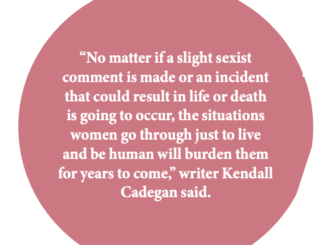
design and illustrations: Hiya Patel
Every four years, the Titans of Soccer around the world gather in one spot to take home the prized possession every player longs for and dreams of since they were children. To win a World Cup Trophy solidifies players’ careers amongst the greats and crowns them as kings of their home country.
This year in Qatar eight glistening stadiums have been built to showcase and house thousands of fans to watch their country go for glory. eight stadiums, almost 100 hotels, even a new glistening city. However, all have been built on the backs of thousands of dead workers.
In 2010, the FIFA Board officially announced the hosts for the two next World Cups. Russia in 2018, and Qatar in 2022. Immediately people wondered how a small tiny desert state even won the bid to host the world’s biggest sporting event to begin with. A yearlong US prosecution case accusing the FIFA Board of accepted bribery and corruption ensued, and according to the New York Times Three South American officials according to the indictment received payments to vote for Qatar.
One of the eight stadiums hosting the World Cup games is the biggest, the Lusail Stadium which holds 80,000 people, will host the cup final. Visitors coming to Qatar will find it rather easier to move around getting to each stadium for it’s roughly about the size of Connecticut and half the size of Whales, according to ESPN.com
And while fans will find the new stadiums marvelous and breathtaking, where are the people who built them?
Qatar’s government hired 30,000 workers to come and build the World Cup Stadiums, and almost 7000 of those migrant workers, assigned to construct the buildings from India, Bangladesh, Pakistan, and Nepal have died since 2010, according to the Guardian. That is an average of 12 workers dying each week. Qatar’s government hired 30,000 foreign workers to come and build the World Cup Stadiums. This fact means since 2010, 21.7 percent of migrant workers have died in Qatar.
However Sophomore Orange Soccer Player Jacob Sensel thinks these deaths weren’t purposeful
“I don’t think Qatar could’ve possibly known that these deaths would happen from the stadiums being built beforehand”
While Qatar’s Government denies these accusations and says there have only been 37 labor deaths in Qatar, the International Labor Organization pointed out that Qatar’s government does not recognize heart attacks and respiratory failure deaths as work-related and those can be common in heavy work in the hot temperatures of Qatar, according to the BBC.
Hummel International, a Danish sportswear brand who made the Denmark National Teams Kits for the World Cup this year, based their design choices with a simplistic look, with one base color surrounding the entire shirt, even the countries badge in a way to protest Qatar by not being visible in support of the migrant workers.
Nicolai Johansen, PR and Communication manager at Hummel shared a FAQ with the Company’s response to questions regarding the World Cup decision.
“The most important thing for us is that human rights have been abused with regards to migrant workers in Qatar. According to Amnesty International, it is estimated that thousands have died in connection with the construction works for the 2022 World Cup, and it is that information that we focus on. We can see that our take on the situation has sparked a new global debate. We see this as a positive thing”, PR and Communication Manager at Hummel Nicolai Johansen said.
Johansen has also clarified that its goal isn’t to create a PR and marketing stunt to sell more jerseys, and said they have succeeded in selling National Team jerseys without messages behind them.
So while the masses will crowd into Qatar stadiums this November from all over the world to see the biggest sports spectacle on earth, the people who helped complete those stadiums will be nowhere to be found, left to be forgotten and hidden by Qatar.


